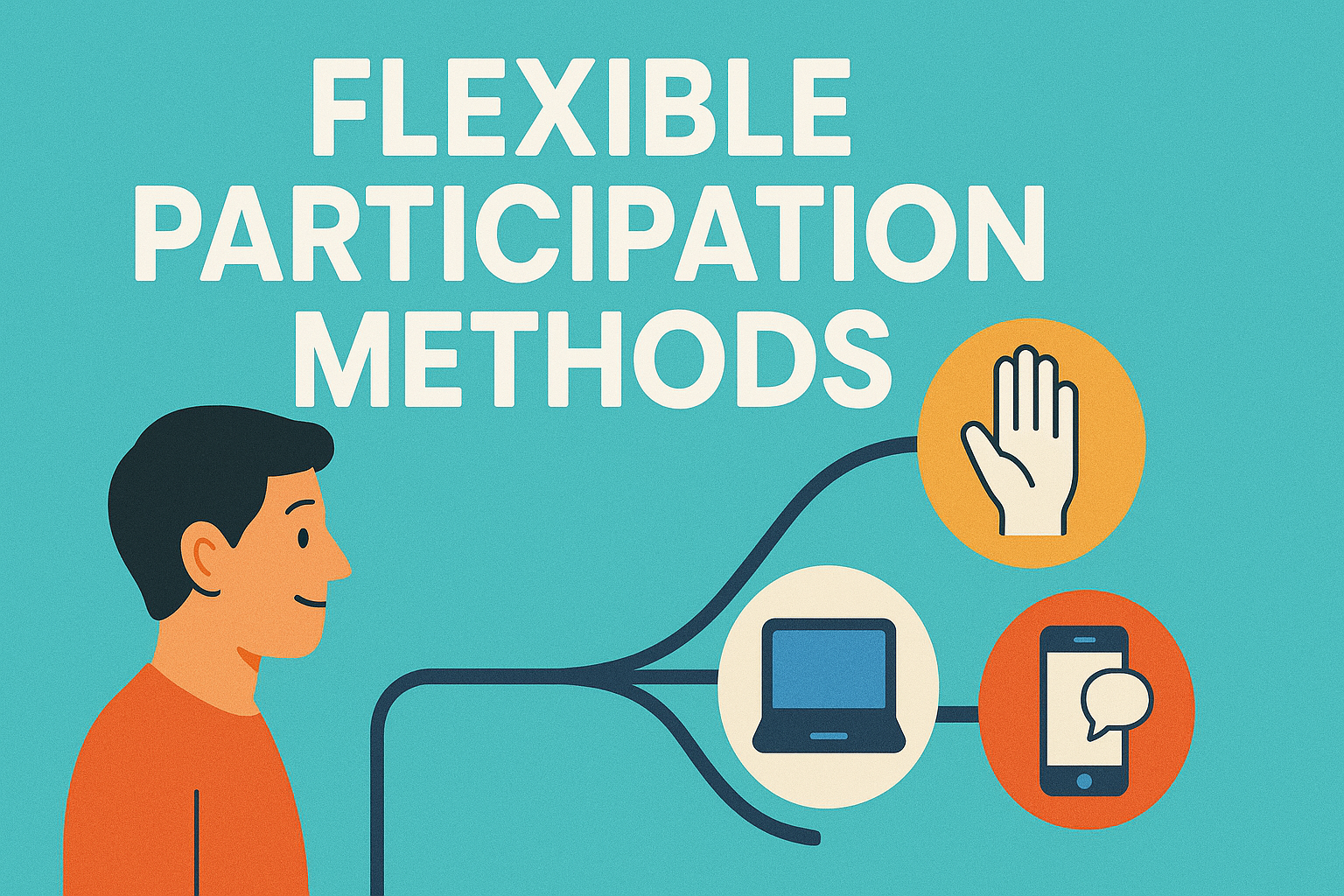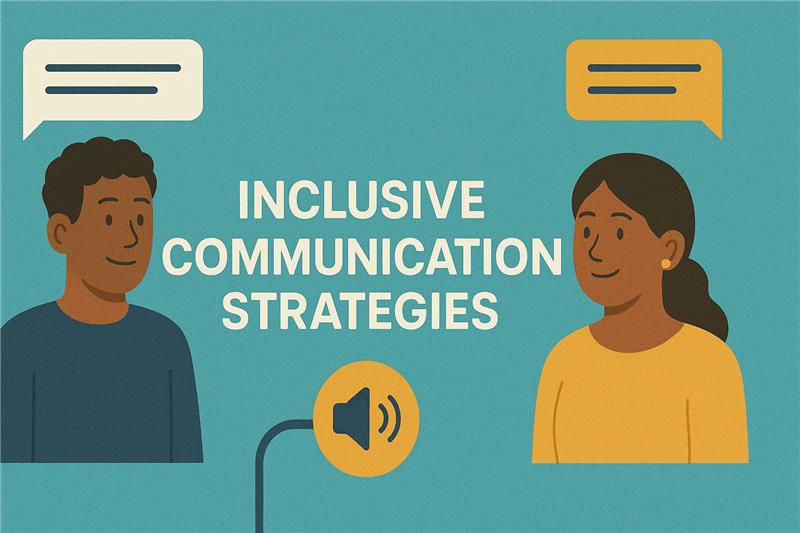
Designing accessible content is only part of inclusive pedagogy. Equally important is creating inclusive interaction and engagement, the ways in which students connect with one another, with you as the educator, and with the course environment. This unit explores how nudging strategies can promote flexible participation, inclusive group work, and accessible communication in digital settings.
By adopting small behavioural cues and design choices, you can create learning environments where all students feel welcome to contribute, regardless of their background, ability, or context. Inclusive interaction is not about lowering expectations; it’s about removing unnecessary barriers to participation.
Students come with a wide range of preferences, strengths, and constraints. Offering multiple ways to participate in learning activities acknowledges that diversity and increases overall engagement.
Examples of flexible participation:
This doesn’t mean unlimited choices. Rather, it’s about designing a few structured options that support different needs and learning styles.
Nudge in action: Add a note to your activity instructions: “Choose the format that works best for you: voice note, short paragraph, or image/diagram.”
This small change signals flexibility and empowers students to engage in ways that feel more natural and accessible.
Group work can be a powerful learning tool, but also a source of stress or exclusion for some students. Issues like unequal participation, dominance, or language barriers can create tension, especially in online settings. Nudging can help here by shaping expectations and fostering collaborative norms.
Strategies to nudge inclusive collaboration
You can also nudge students to support one another by embedding small prompts like: “Before submitting, check in with a teammate, did everyone feel heard?”, or “Use the group chat to share one challenge and one strength you each bring to the task.”
These nudges model inclusive behaviour and encourage students to reflect on how they collaborate, not just what they produce.

How you communicate as an educator, and how you invite communication, shapes students’ sense of belonging and safety.
Inclusive communication is:
Digital nudges to support inclusive communication:
Also consider how students can communicate with you. A quick poll or message like: “Would you prefer office hours via chat or video?”… shows responsiveness to varied needs and nudges students to take agency over how they connect.
As an educator, it’s easy to fall into habitual patterns, like always using written forums or assuming students will speak up on video calls. Self-nudging can help you notice and diversify your practices.
Try these self-nudging techniques:
Even subtle changes, like switching from “Everyone should speak” to “You may share in the chat, by emoji, or via post later”, can shift the tone and open space for more learners.
Inclusive interaction is not about offering every option to every student at all times. It’s about creating a structure that expects diversity and a culture that welcomes it. With thoughtful nudging, you can support broader participation, more equitable group dynamics, and stronger connections in your digital classroom.
The activity below will help you apply this to your own context.
Objective:
To gather real-time input on how inclusive your current engagement practices feel to students.
Instructions:
(1) Choose one session or assignment from your course.
(2) At the end, add a single-question anonymous feedback prompt, such as:
(3) Reflect on the responses. Identify:
(4) Set a self-nudge based on your reflection: